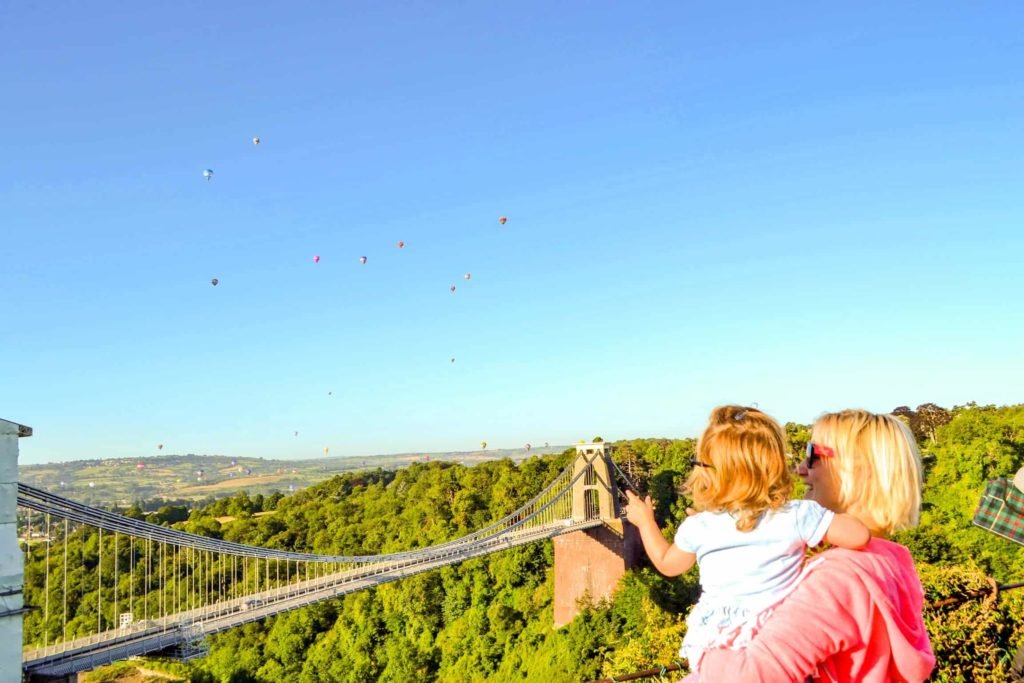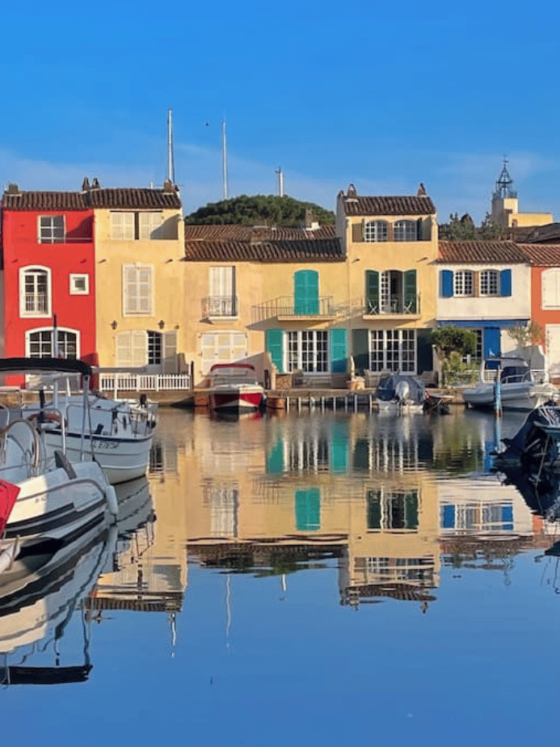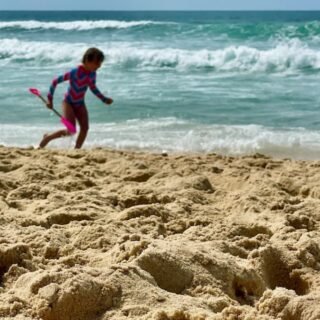Tips for taking the ferry to Spain from UK
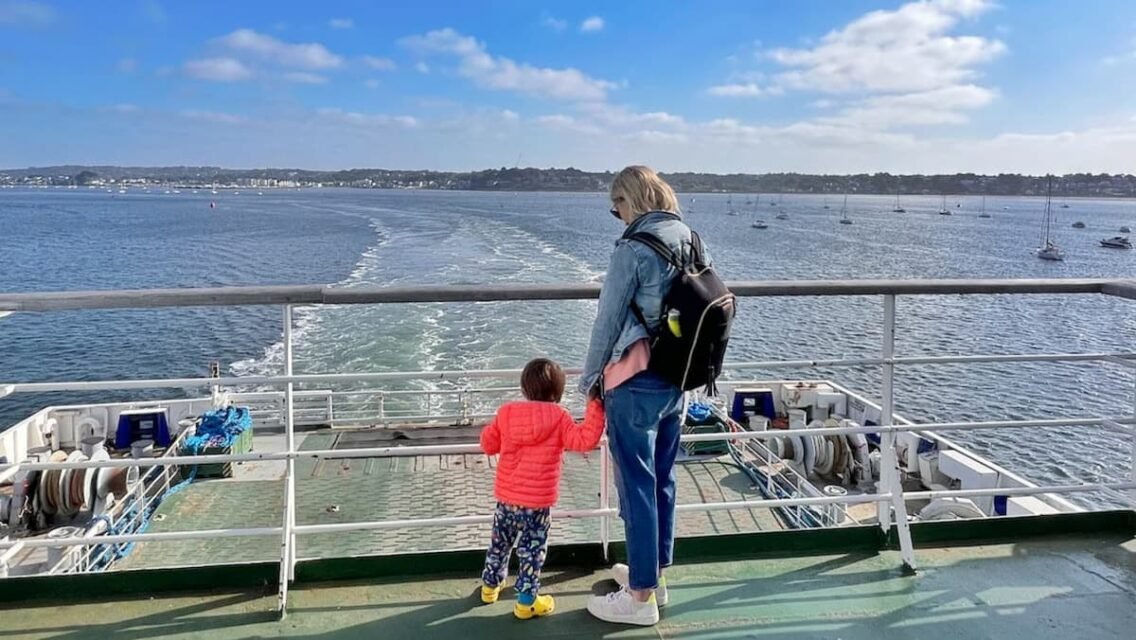
These top tips are based on our personal experience taking the ferry to Spain from the UK with Brittany Ferries (crossing from Plymouth to Santander) in August. We have also previously done the Bilbao to Portsmouth crossing. We paid for our own ferry crossing.
For what felt like the first time that summer, the sun was beaming down on England. As we sat back, sipping our gin and tonics, with the horizon slowly fading behind us, that holiday feeling kicked in instantly.
We were off to France on Brittany Ferries for our camping holiday, via Spain. As our first campsite, Sandaya le Col Vert, was based in the South West of France, we had decided to cut out all the driving on the way down and book a cabin on the Brittany Ferries Plymouth-Santander ferry.
The 23-hour crossing which would get us to the coast of Northern Spain – three hours from our first French campsite – while we were free to eat, drink and play on board. Previously, with two children, we travelled from Bilbao, Spain to the UK and loved being able to go to the cinema and watch movies while we were whisked to our destination.
It’s worth noting that this is one of the priciest ferry crossings from the UK to Spain, but considering the alternative—a nine-hour drive across France from Cherbourg, or twelve hours of travel time from Dover-Calais—we actually saved a lot on fuel and motorway tolls.
While I have heard horror stories of very rough crossings, and sea sick passengers, we have so far (touch wood!) been fine on this route and the Bilbao ferry from Spain to UK route. And that’s coming from someone who has a very travel sick child!
Disclaimer: This post contains affiliate links, should you click to purchase, it is at no additional cost to you, although I receive a small commission which goes towards the upkeep of this blog.
Taking the ferry to Spain from the UK? Here’s everything you need to know about taking the Brittany Ferries crossing

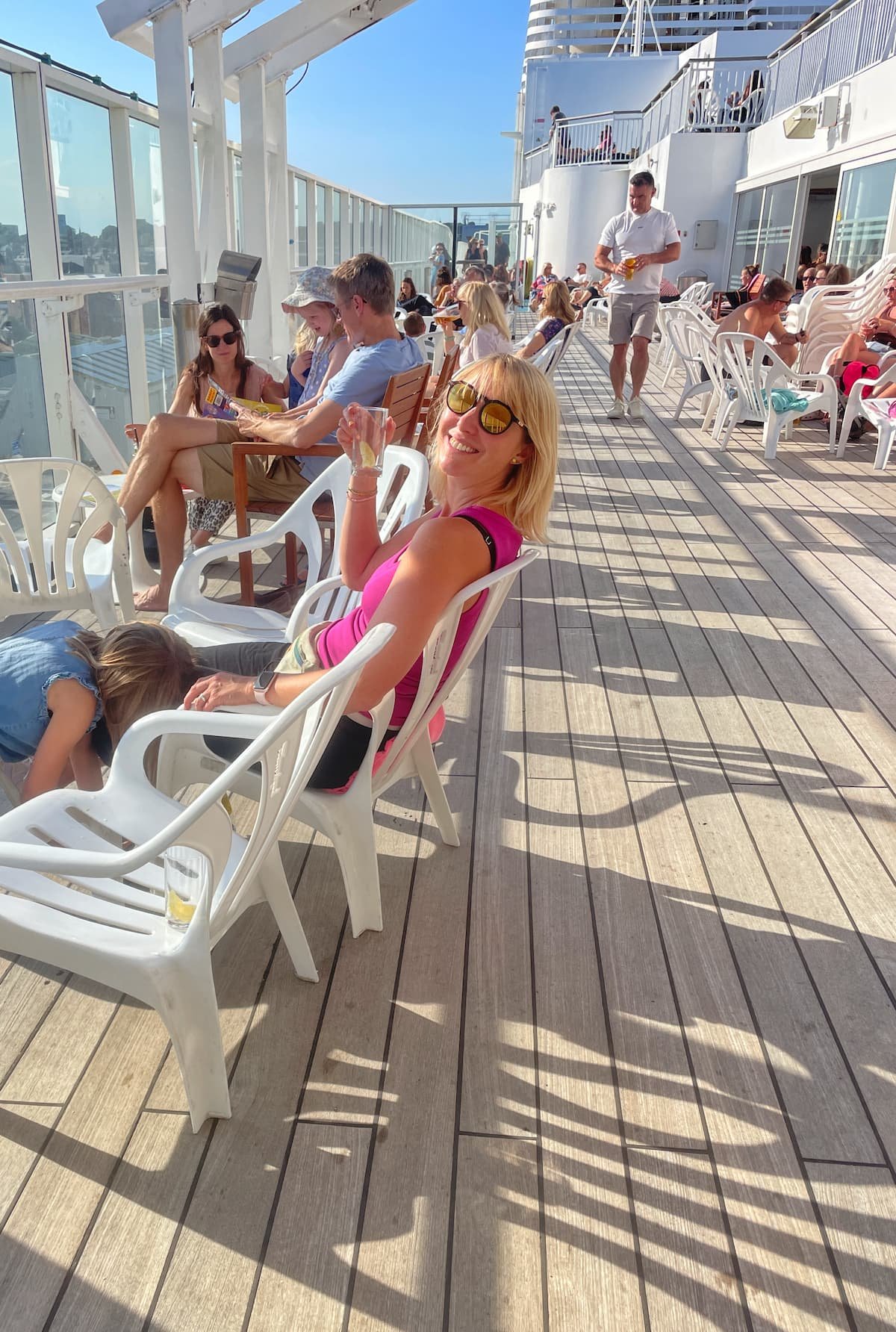
1. Make sure your passport is valid
This might sound like an obvious one, but the recent ‘10-year rule’ on passports means that lots of people in the UK have been caught out recently due to changes in Brexit regulations. My husband nearly suffered this fate at Plymouth passport control, when the officer alerted us to this fact.
Even though my husband’s passport technically showed it was valid until April 2025, giving him six months left (or so we thought, even after reading about the new rules), it actually ran out in September 2024 because months had been carried over from his previous passport.
In summary:
- Your passport must be less than 10 years old before the date you enter an EU country.
- You must have at least three months left on the passport when you depart the EU country at the end of your holiday.
The above essentially refers to the issue and expiry date of your passport, which can be found on the photo ID section of your passport.
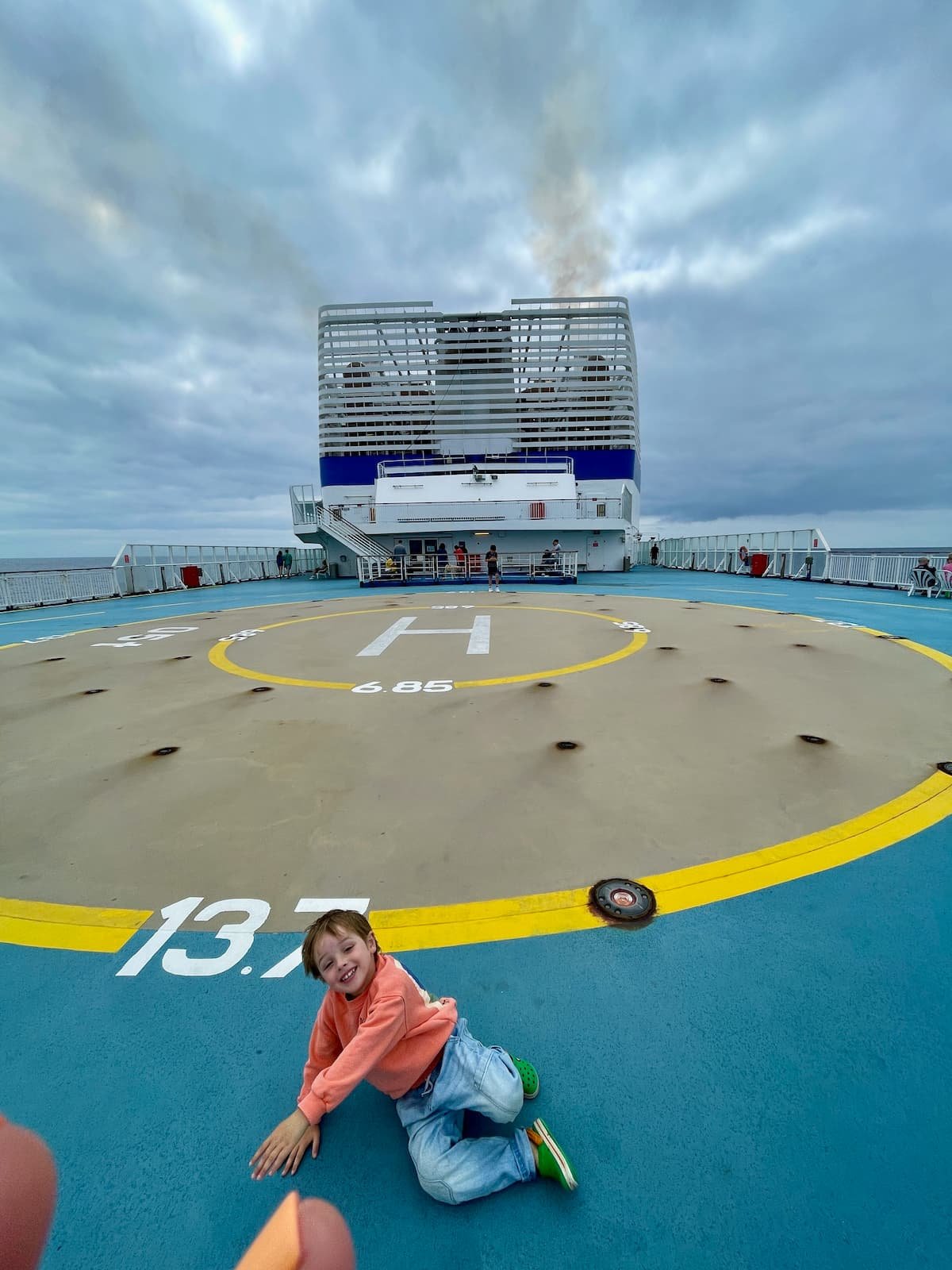
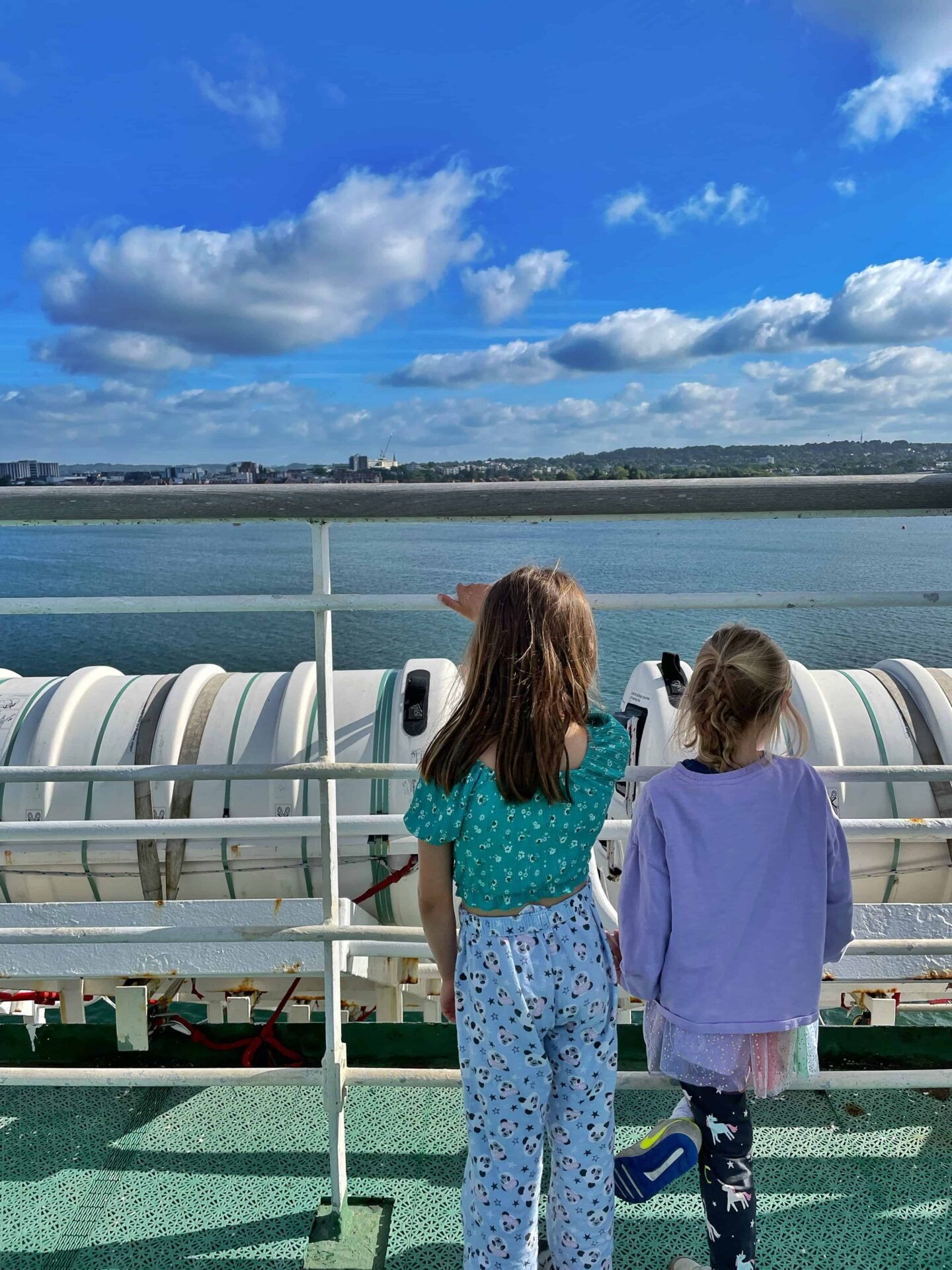
2. When to arrive at the UK port
One reason we prefer any other UK crossing to the Dover-Calais ferry (which I have vowed to avoid if possible at all costs after MANY bad experiences), is that the customs check-in is much faster. The ferry tickets say you need to be checked-in 45 minutes before the scheduled departure time and we got the ferry to Spain from Plymouth at 4.20pm for a 5.45pm crossing.
in the past, when we have done Dover to Calais, or Calais to Dover, we have been at the port with hours to spare, only to be kept queueing for so long in the UK passport control section that we once watched our ferry sailing away from the edge of the port at 10pm at night (with kids who hadn’t eaten for hours and a measly packed lunch bag offered to us when we did eventually get on a P&O ferry).
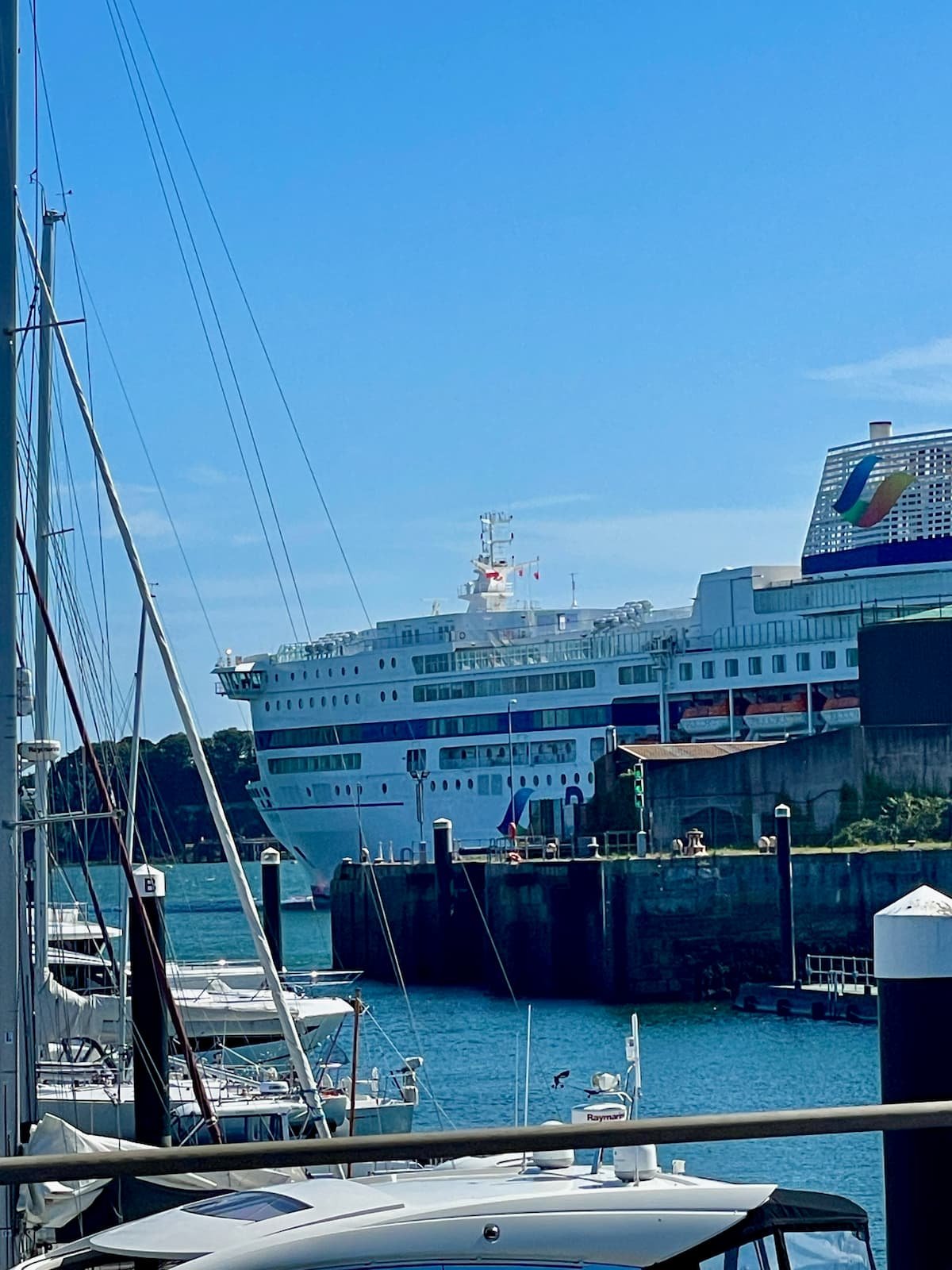

3. Pack small bags for the ferry
I like to pack a little overnight bag for everyone in the family, so once you park on the ferry, each person can just grab their backpack and go. Be sure to include a toothbrush, toothpaste (I left ours in the car last time and it cost €5 for a tiny tube at the ferry shop!), pyjamas, change of clothes, wipes, glasses/contact lenses, nappies, underwear and any entertainment you want for the crossing, e.g Kindles, colouring, magazines, ipad etc.
Make sure you have a warmer layer/coat/jumper with you as it gets quite fresh on deck.
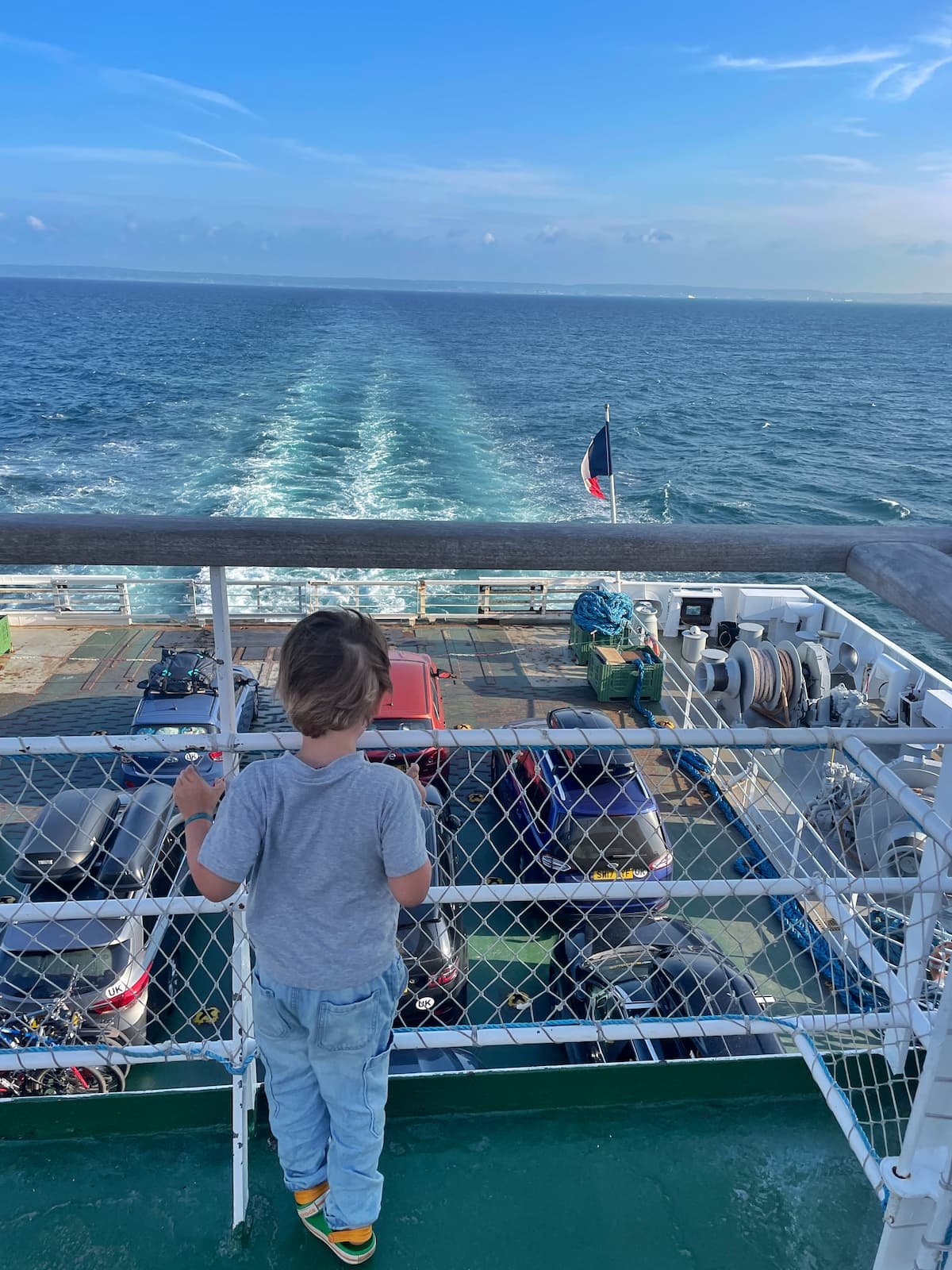

4. Pack swimming gear
The Pont-Aven ferry crossing to Spain from UK has a swimming pool on board, so make sure you have your swimming stuff in your ferry backpack! It was very popular with kids on our crossing and a fun way to kill time.
Be aware there are no lifeguards on board, so children must be supervised and it’s usually only open from May-September.
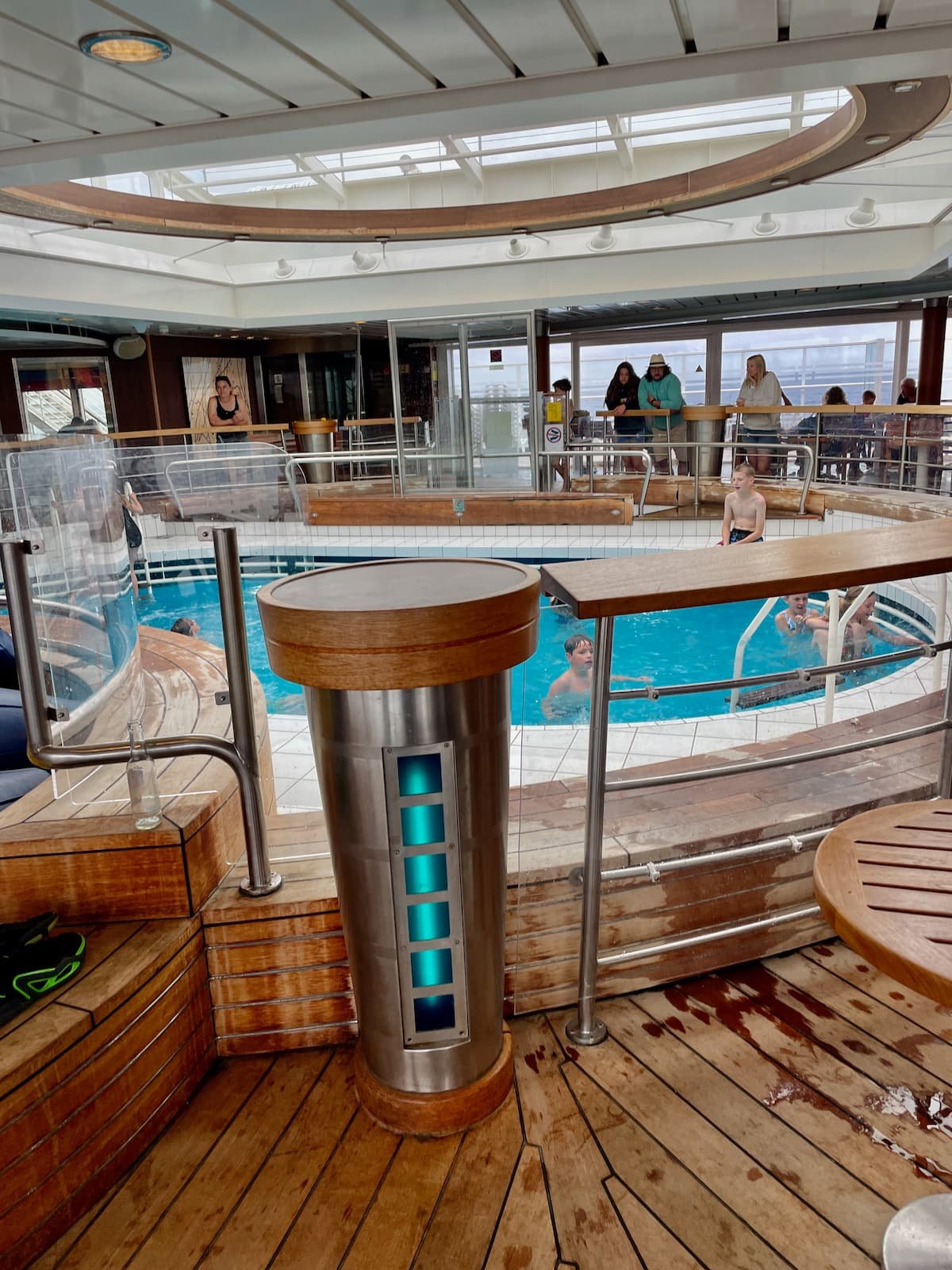
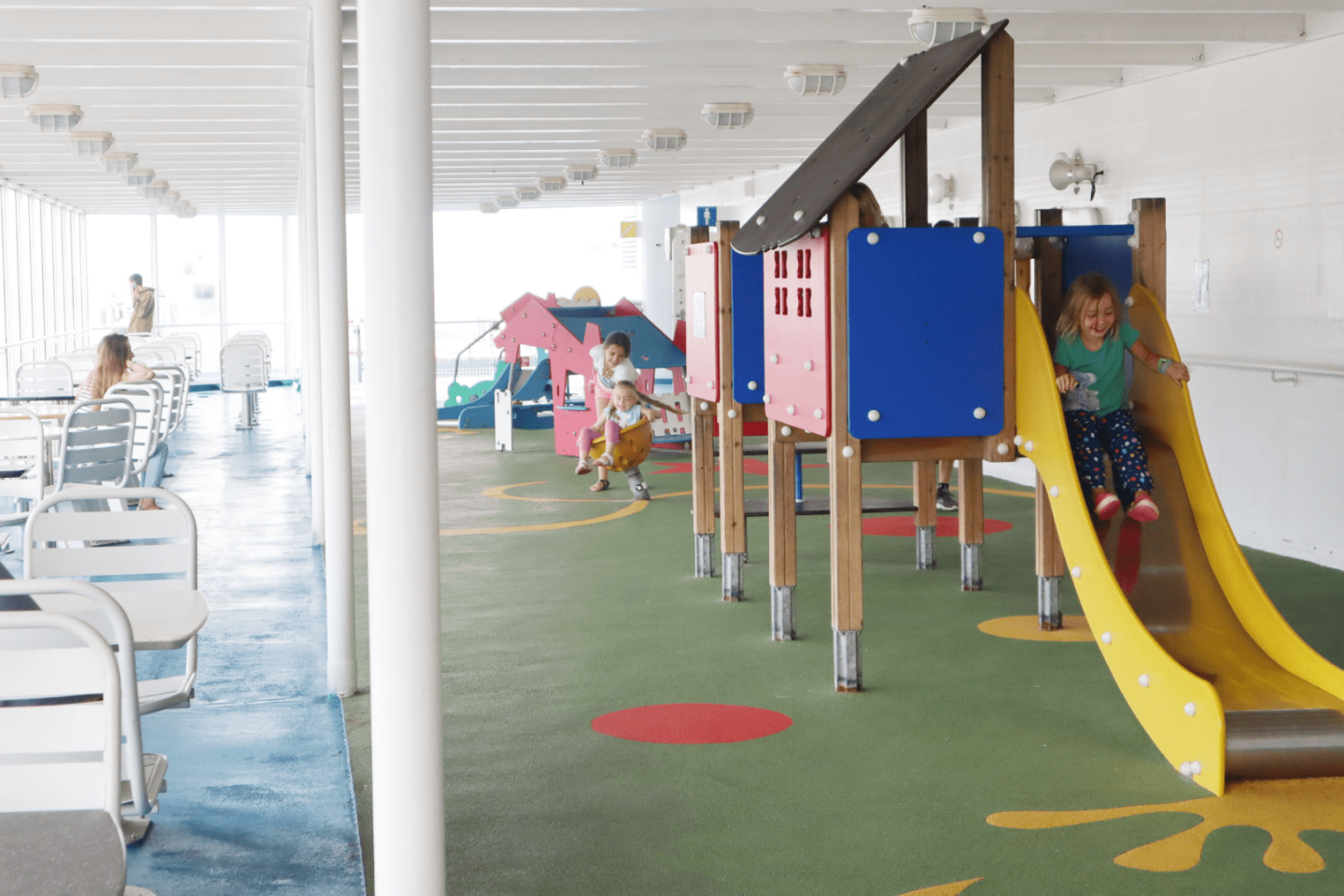
5. Pack snacks/breakfast/a cool bag/drinks
While there are a number of dining options on board Pont-Aven, including a self-service restaurant, an a la carte restaurant and bar, they are quite expensive. No meals are included in your fare for the 23-hour crossing, so if you’re eating out for every meal, it adds up.
If there’s a few of you (there are five in our family), I’d recommend pre-purchasing a food pass which you will be emailed about before your crossing. From the selection of Small (£25 + £1.25 free), Medium (£40+£4 free), or Large (£50+£7.50) Food Passes, I’d go Medium or Large to make the most of the extra free spend, when you dine or buy drinks in the café, self-service or main restaurants (excluding bars). Log into your account and do this before you board the ferry.
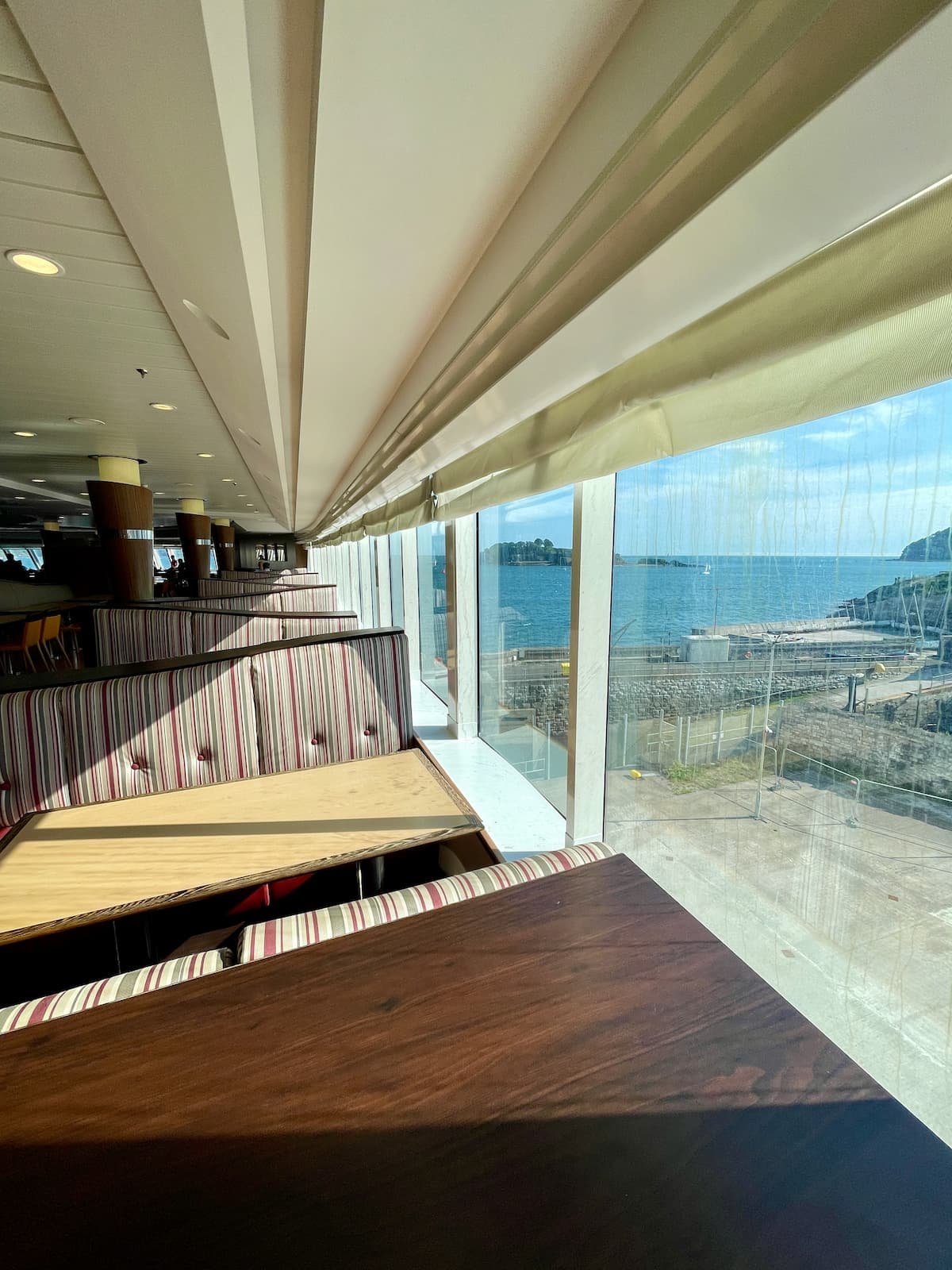
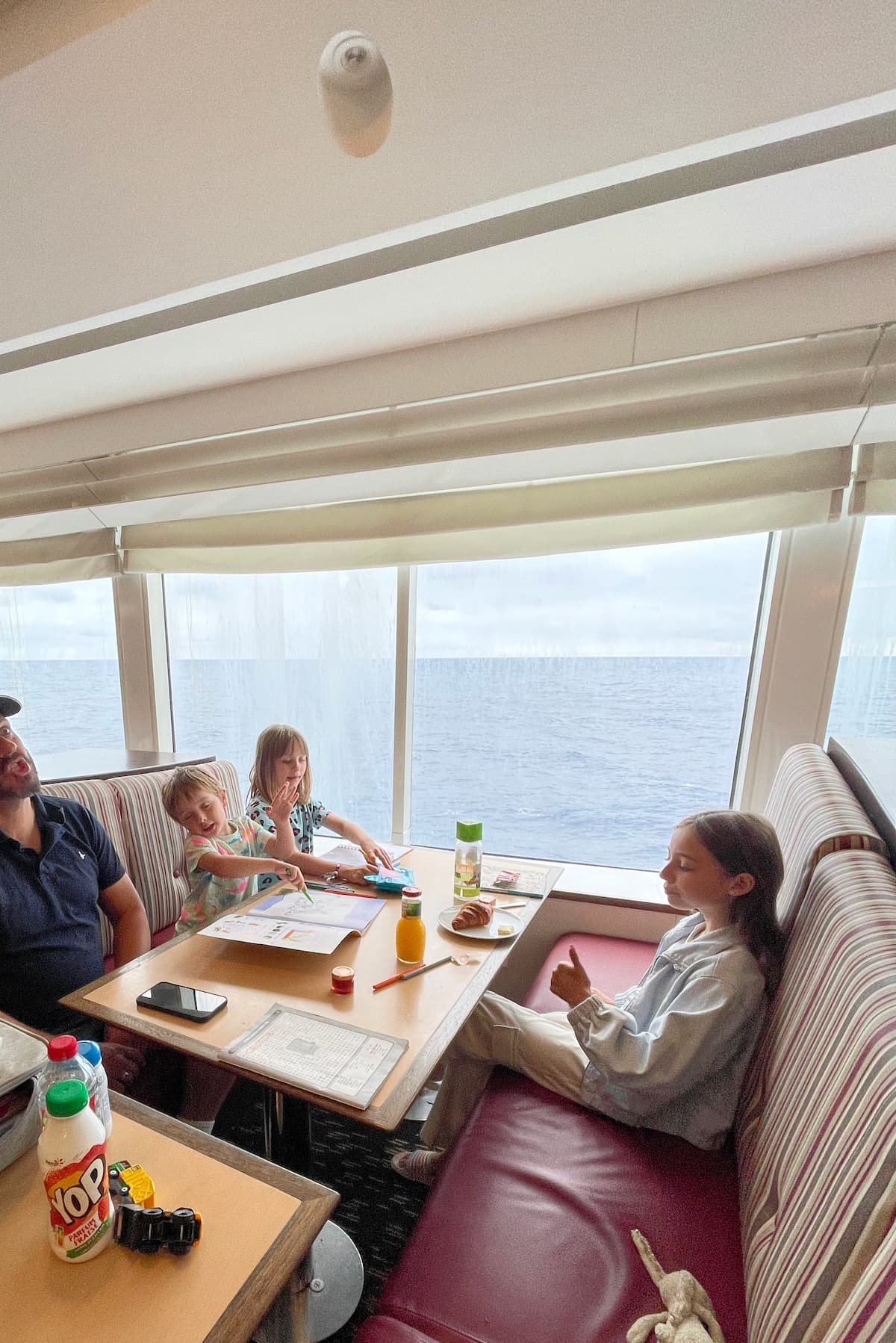
There are microwaves onboard which are free to use, so I’d recommend taking some porridge oats sachets, mini cereal variety packs or similar and long-life milk. As our toddler loves his milk, I had a small cool bag which I stocked with fruit, carrot/cucumber sticks, hummus, olives as well as crisps, snacks and some gin and tonics for the adults! Milk can also be bought onboard.
If the shipping forecast looks rough, it’s a good idea to have some food for dinner and breakfast in your cabin. That way, if anyone in the family starts feeling sick, or you can’t make it to the restaurant or you’re not allowed out of the cabins, then at least you have a back-up plan.
FYI For the kids set menus, you must pick what dessert they want first and tell the cashier, so they can put it through the till. You can then collect whatever pudding they have chosen later (so the ice creams and lollies don’t melt on the tray and so you don’t have to beg them to eat their savoury food first!)
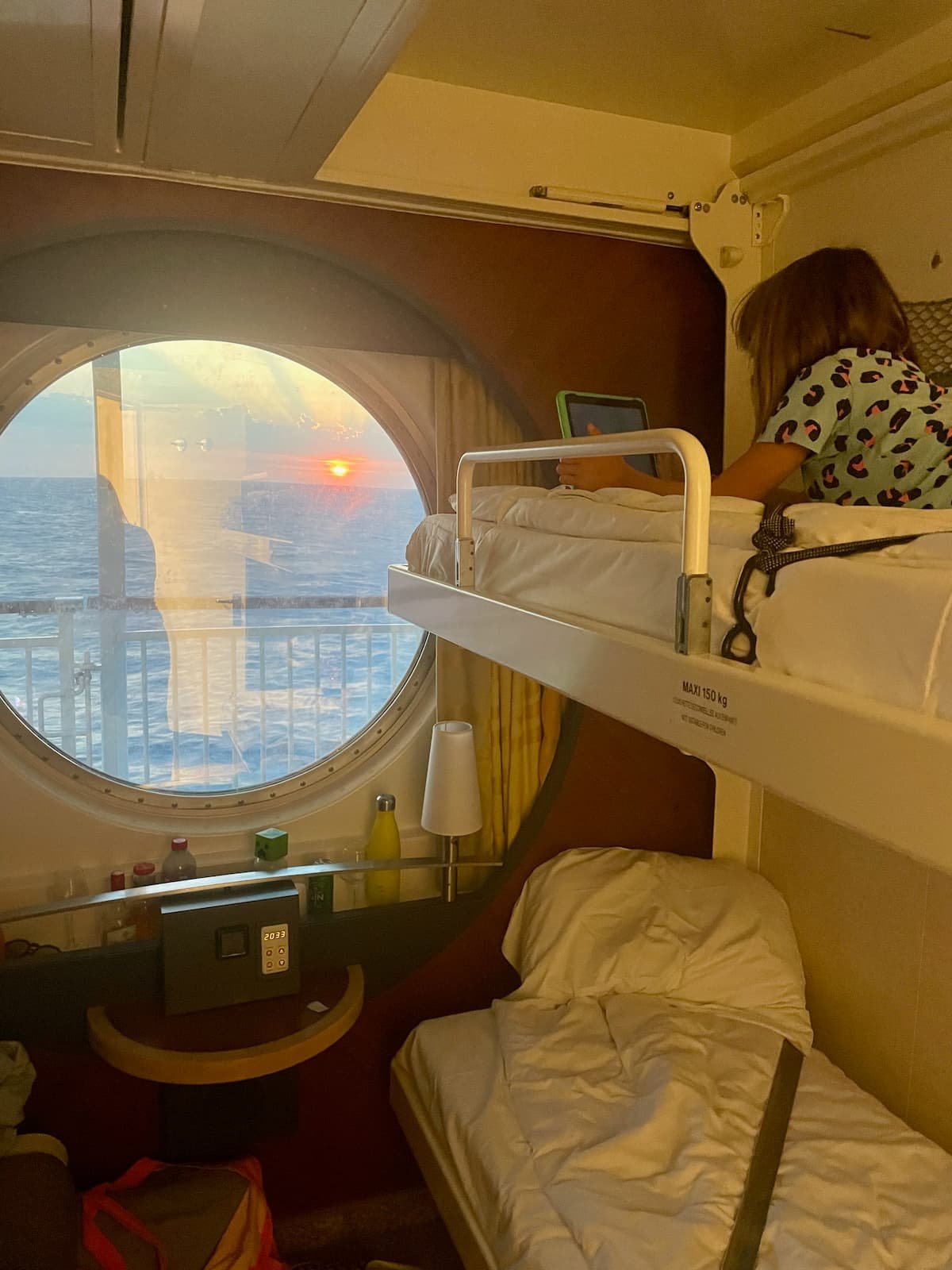

6. Pack a travel kettle
Your cabin doesn’t have tea or coffee-making facilities, and tea and coffee onboard is quite pricey. Bring a small travel kettle (like this one) along with your favourite tea, coffee, and milk. As mentioned above, milk can also be bought onboard.
7. WiFi
Each passenger gets a free 30-minute WiFi session, but then you need to pay (there is a choice of three options). The WiFi service is provided by satellite, so is nowhere near as fast as at home.
Phone internet connection won’t work for most of the crossing, so if you have movies on devices you want to watch,or games the kids like to play, make sure they are downloaded beforehand.
8. Travel sickness medication
My daughter suffers from quite severe travel sickness and over the years we have ditched sea bands and other supposed car/sea sickness remedies for just one miracle worker of a medication: phenergan.
Before taking this medicine, she would get sick on almost every road trip. But after using it, she could watch a film and even play on a device without any trouble. While she still felt a bit queasy on the ferry and preferred lying down in the cabin, she didn’t get sick at all.
You can get it in liquid or pill form from pharmacies, but be sure to check the correct dosage and age requirements. It’s also available online, though usually at a higher price.
It is advised to take it the night before, so you need to remember to do that before travelling. She also took it the night onboard the ferry for the next day. The ONLY downside, is that it can make you quite drowsy and if kids don’t nap, they can be quite grumpy! On the plus side, if on a longer journey, the napping is definitely a bonus.
As my husband also gets quite queasy on boats too, and my other daughter had been ill on a previous ferry trip, we all took the medication to be on the safe side.

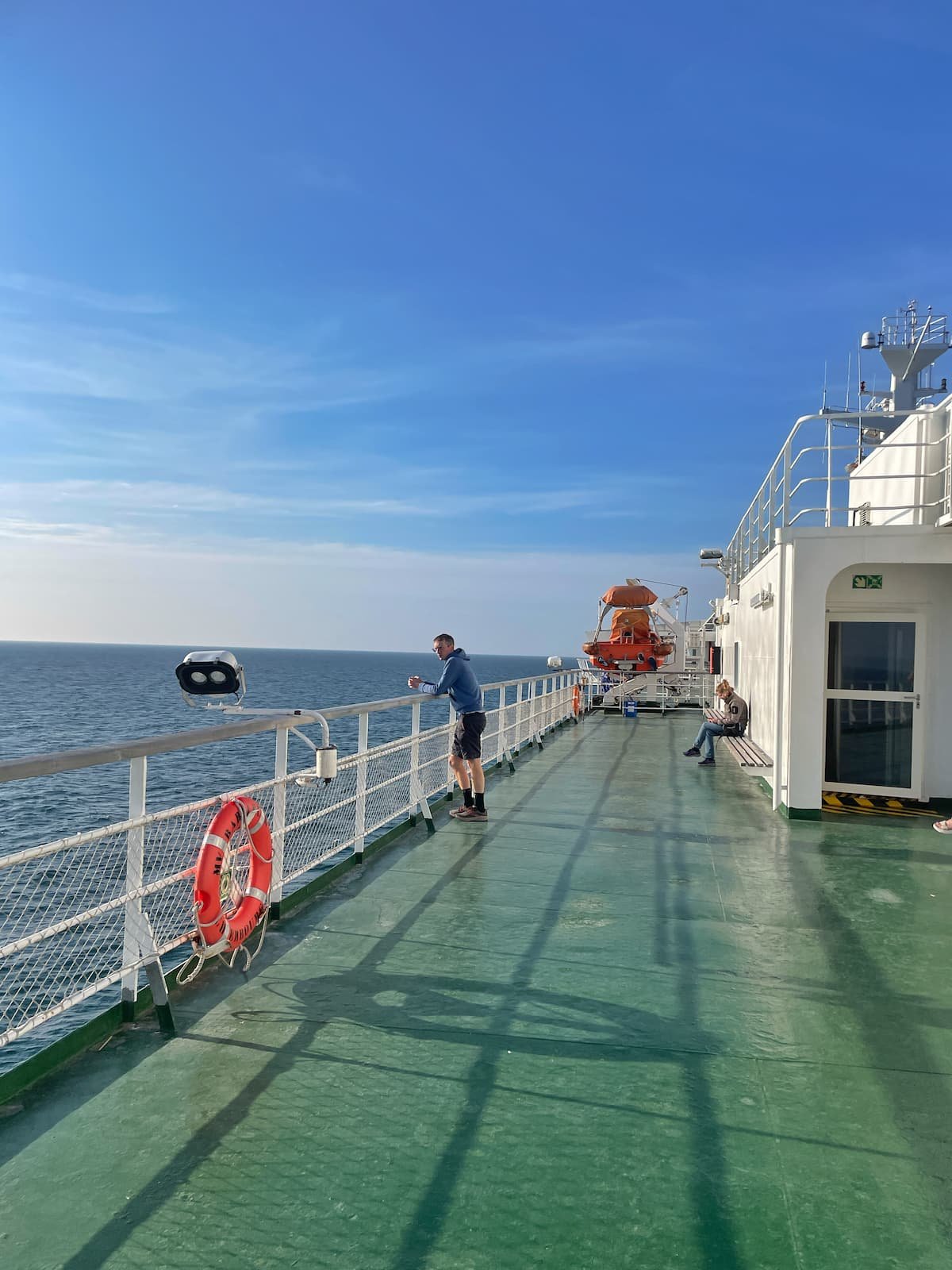
9. Bring entertainment for the kids
While there is a cinema, a swimming pool, and a couple of play areas onboard, and evening family entertainment (which my three year old loved watching). You will want to bring some of your own entertainment for the kids.
Make sure you have headphones for their devices so they can watch their own movies.
We also like Dobble and UNO and will alway take a colouring/drawing book and some pens/pencils.
FYI If you order the Kids Set Menu on board, you will also get a little Brittany Ferries bag with an activity book, crayons and water bottle.
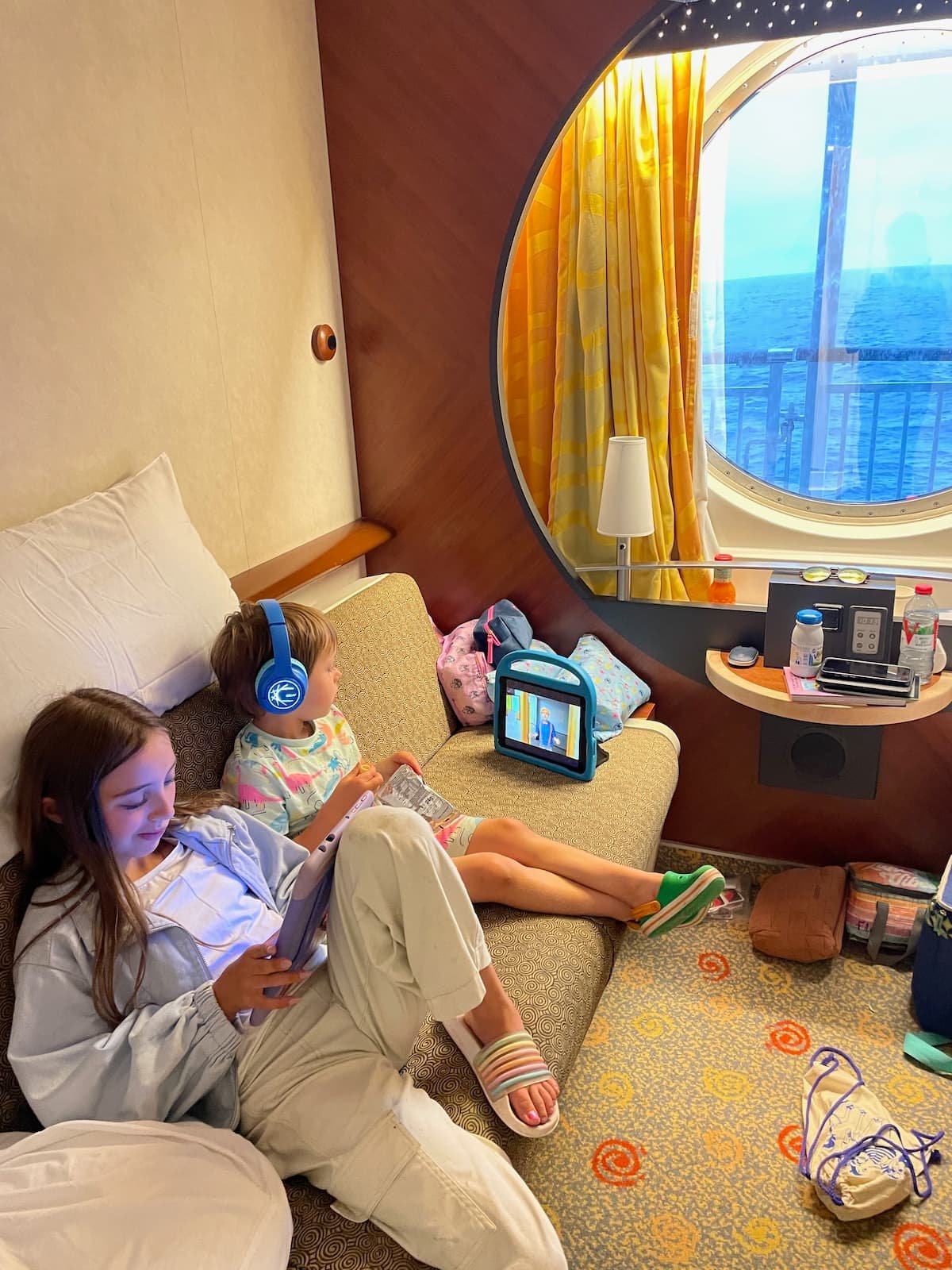

10. Download the Ferrynauts App
Brittany Ferries has a fun interactive app for kids called Ferrynauts! It’s a great way to keep them entertained for an hour while exploring the ferry. Just be sure to download it before you set sail—once you’re out at sea, internet connection is gone!
11. Keep an eye out for dolphins and whales!
On calm days, whales and dolphins can often be spotted from the ferry—though we weren’t lucky enough to see any on our crossings. It’s a great excuse to head out on deck for some fresh air though. Fingers crossed you have better luck!
12. Go for a cabin with a window
If you book your UK to Spain ferry early enough, you will be able to get a cabin with a window. They are the most expensive option, but totally worth it for obvious reasons. You can watch the ocean go by, see sunrise or sunset, and it makes the cabin feel less claustrophobic. Cabins are ensuite and come with a toilet, sink, towels and shower. The top bunk beds can be folded away so there is more room during the day.
Even though there are five of us in the family, our youngest is small enough to sleep top to tail with me (he climbs into our bed most nights anyway!) Brittany Ferries never questioned the fact we had five in a four berth cabin. You can also hire a cot to put in the middle if your little one needs. I’m sure as our youngest gets bigger this will change, but for now, we’ll take the cheaper option!
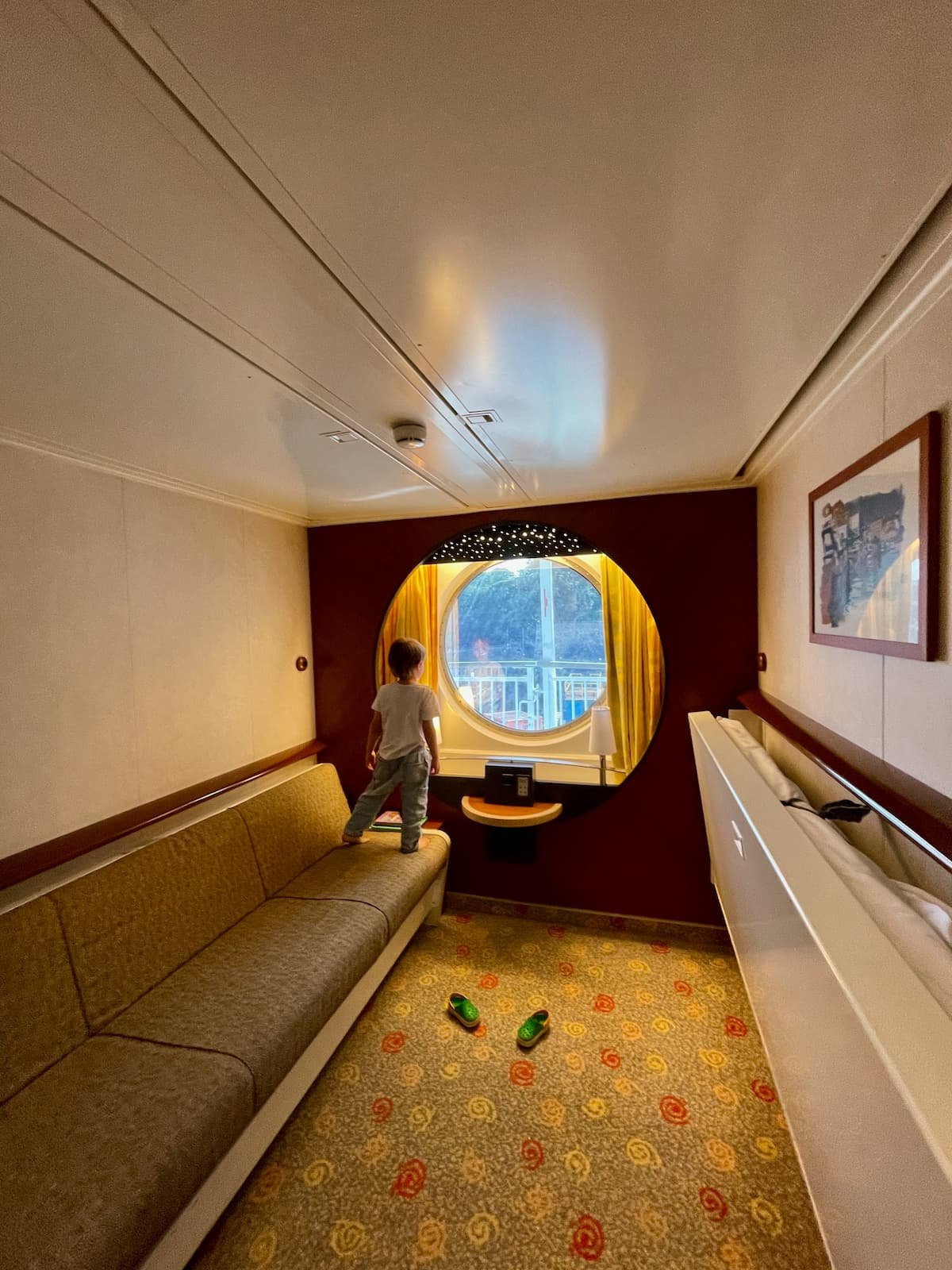
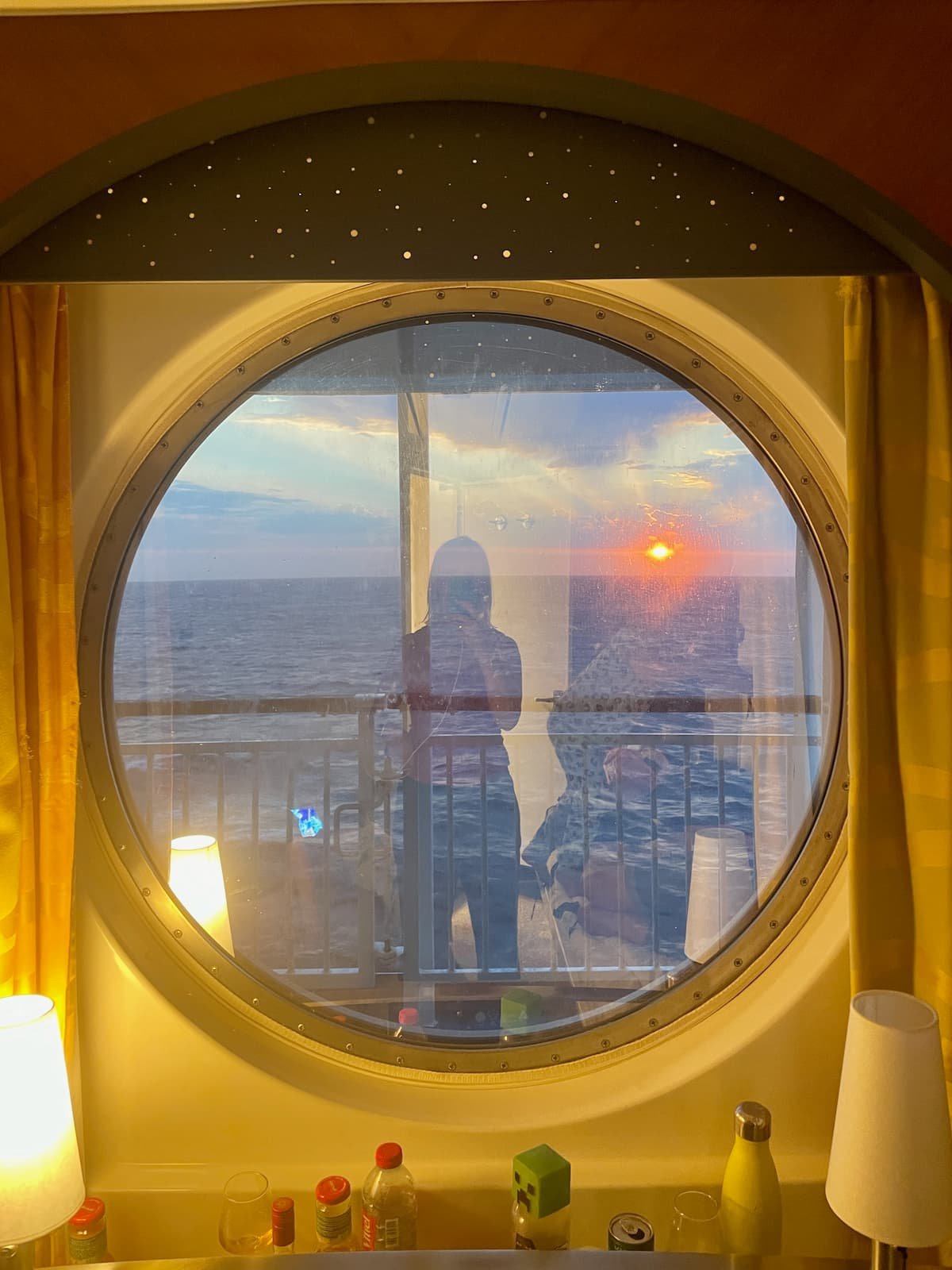
13. Check you have everything you need to drive in Spain
Check here to see everything you need to drive in Spain (and also France, if crossing over the border like we did). When crossing over from Spain to France, there is no passport control.
If it turns out you have forgotten something, there is a shop onboard which sells lots of items you need for driving in the EU.
14. Check the shipping forecast
Check the shipping forecast before you leave so you can be prepared for what’s in store. We were lucky on both our Bilbao-UK and UK to Santander trips, but I have heard horror stories of rough seas!

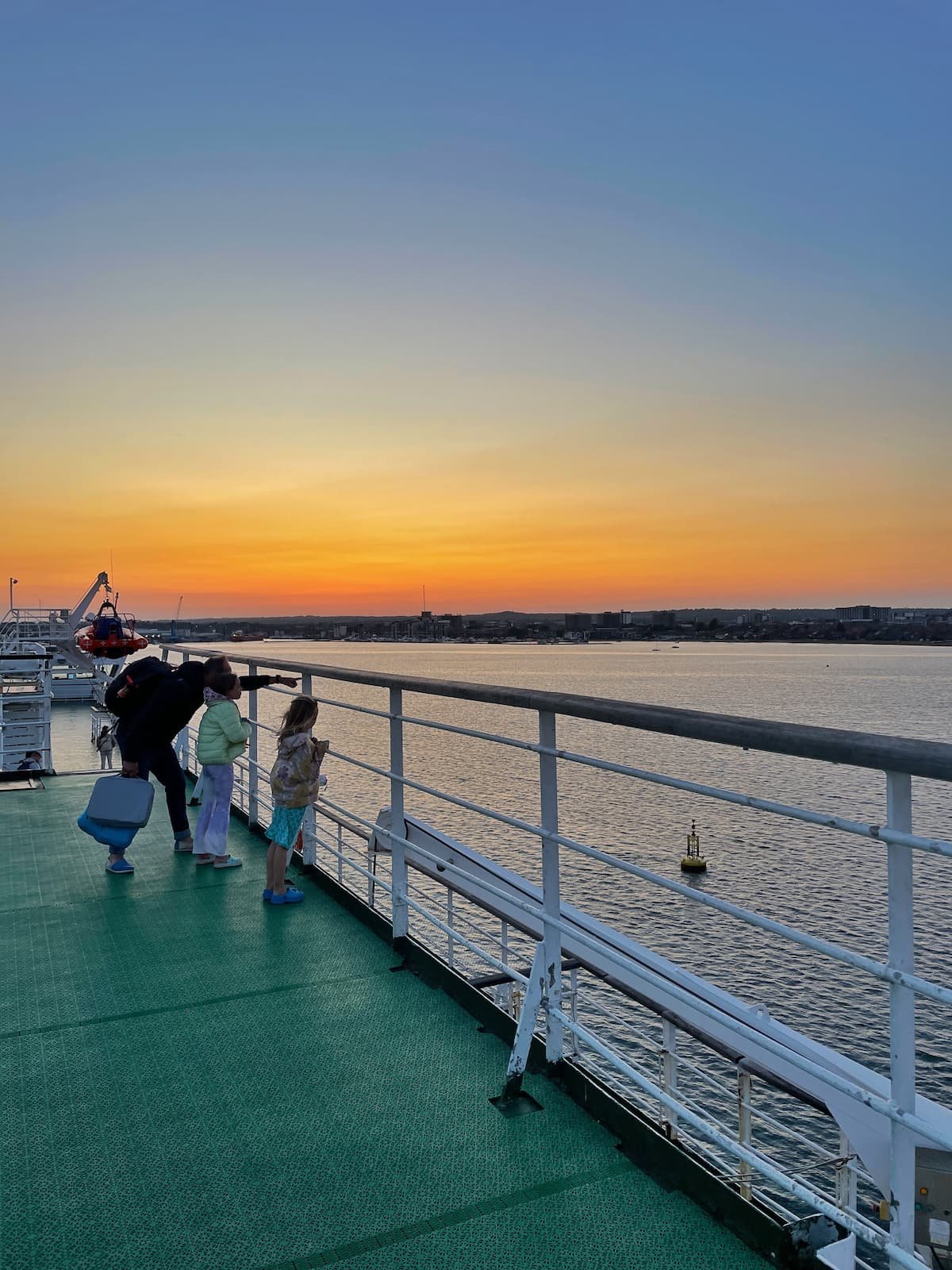
15. If booking with Eurocamp, get them to book your ferry
If booking with Eurocamp, make sure you ask them to book the ferry for you on their rates as you can make HUGE savings on crossings doing it this way.
15. Final thoughts on the car ferry to Spain from UK
As we live in the South West of England, we tend to go for Brittany Ferries crossings to France and Spain that leave from Plymouth, Portsmouth or Poole. These are so much closer to our house and always seem to be much easier and relaxed than the Dover-Calais crossing.
While the South West ferries are a bit more expensive, we tend to save on fuel and tolls and general stress, which we have come to associate with the Dover port.
Our ferry crossing to Spain left the UK in August at dinnertime, giving us a chance to enjoy a drink on deck (which felt a bit like being on a cruise) before sitting down for a dinner with sea views. With family entertainment, a cinema, a swimming pool (don’t forget your swimwear!), and plenty of dining options, there was lots to keep us busy.
One of the biggest perks is that the kids are free to roam, and burn off energy—something that would have been impossible if we’d been stuck in the car for hours driving through France. Instead of endless “Are we there yet?” questions, they got to run around on deck, have a swim, and potter about while we sailed towards Spain.

We arrived in Spain at 3.30 pm the next day, making for a relaxed afternoon drive to our first campsite. The total cost for our family of five—including a window cabin, roof box, bikes, and a backbox—came to £669, which was almost a third of what we’d have paid for summer holiday flights to France.
I imagine, if you do have a rough crossing, or do suffer from bad sea sickness, this crossing could be quite hellish, but it was a risk that paid off for us.
Instead of kicking off our trip with long hours of driving, we started it in a much more relaxed and enjoyable way. If you’re heading to France or Spain, taking the ferry is definitely worth considering!
Other useful info:
- On board the time used is British time.
- Prices onboard are displayed in euros but you can also pay in sterling.
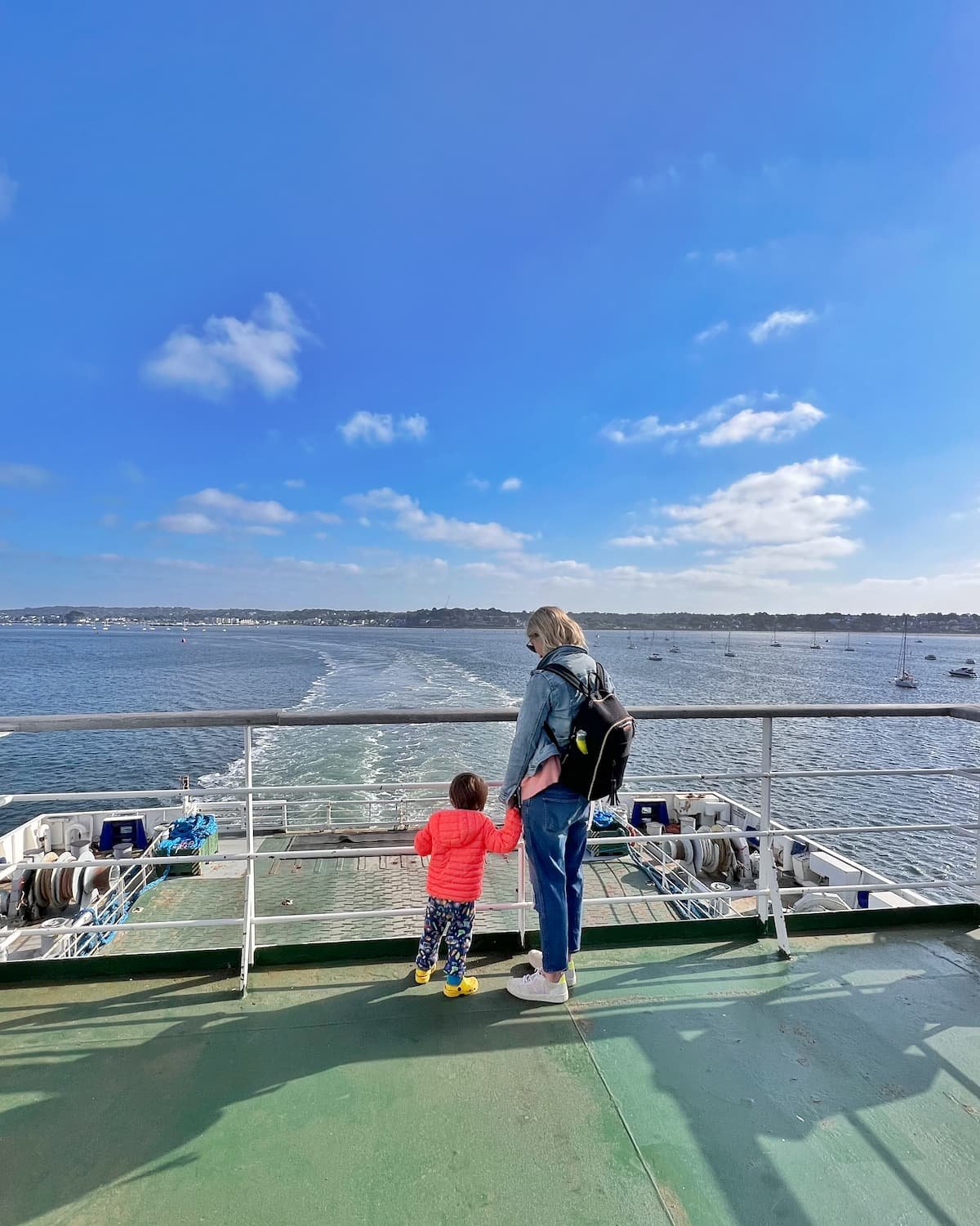
Liked this post on car ferry crossing from UK to Spain? You might also like:
- Trip to France and Spain: our French road trip itinerary
- Camping itinerary for road trip in France: SW coast to Dordogne
- Dordogne Riverside Camping Domaine de Soleil Plage – REVIEW
This Bristol Brood is a free online resource designed to help you plan your Somerset adventures. If you’ve found it helpful, you can show your support by buying me a coffee. Thank you!


